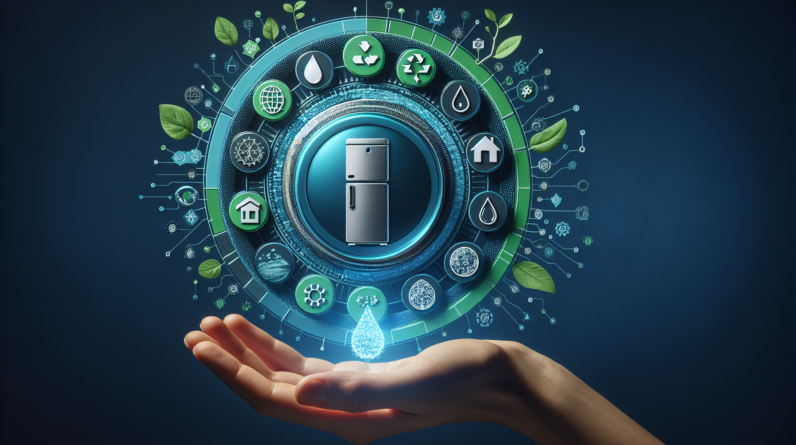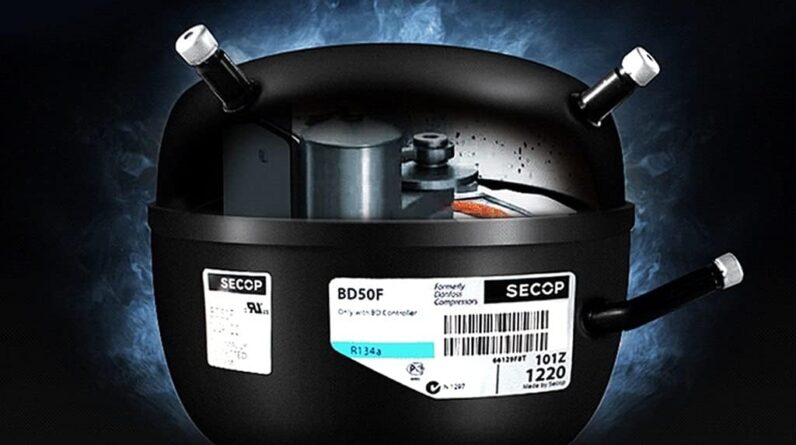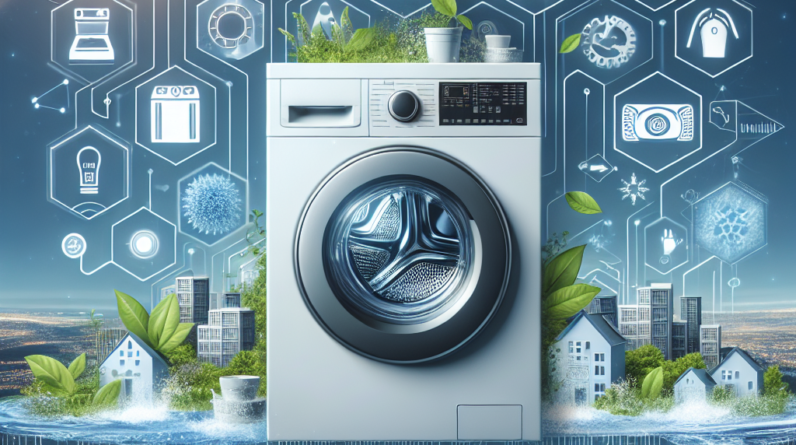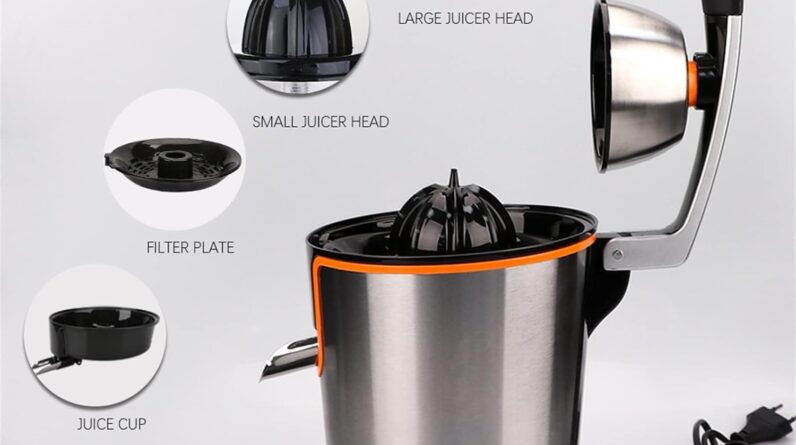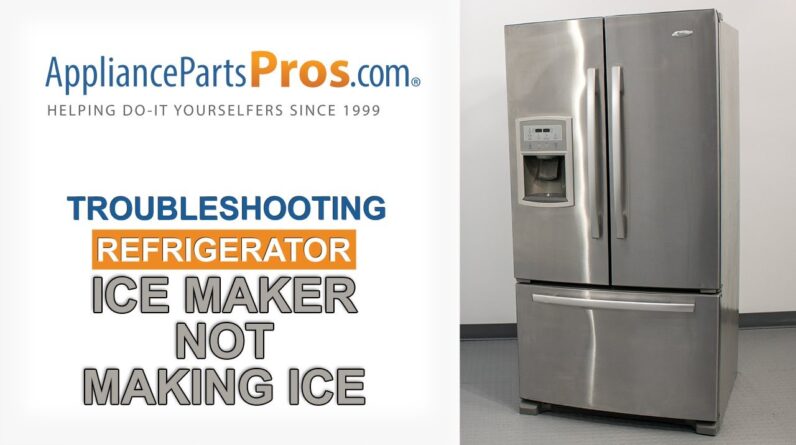
Is your refrigerator ice maker not producing ice like it used to? Don’t worry, you’re not alone in facing this frustrating issue. In this article, we will explore some common reasons why your ice maker might not be working and provide you with simple and practical solutions to get it back up and running smoothly. So, sit back, relax, and let’s troubleshoot your malfunctioning refrigerator ice maker together!
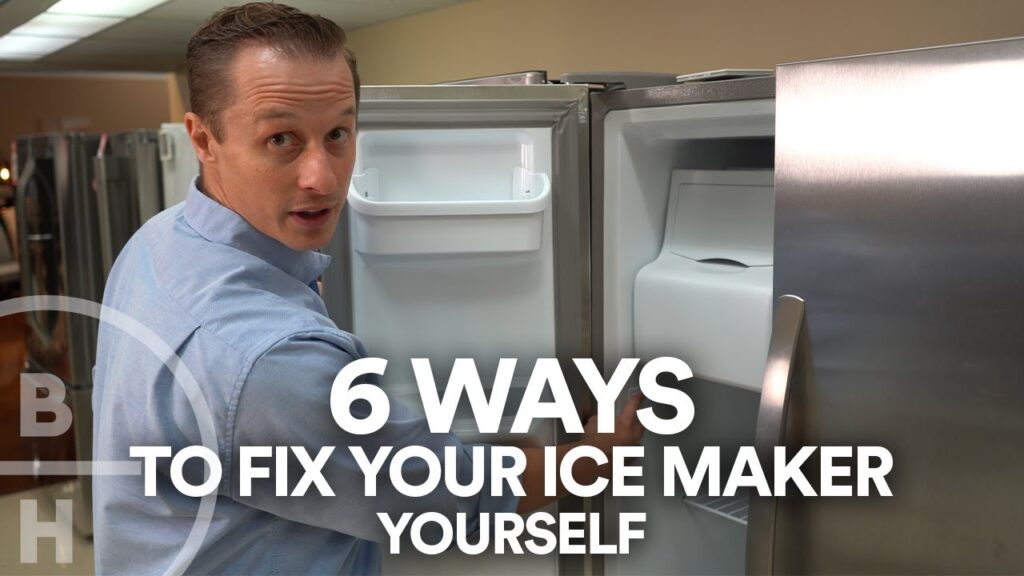
Check the Water Supply
When your refrigerator ice maker stops producing ice, the first step is to check the water supply. Start by ensuring that the water supply line is properly connected. Sometimes, due to normal wear and tear or accidental movement, the water supply line might become loose or disconnected.
To check the water supply line, locate the water valve at the back of your refrigerator. Check if the water supply line is securely attached to the valve. If it is loose, simply tighten the connection by turning the nut clockwise until it is snug.
In colder climates, freezing can be a potential issue for the water supply line. If the line is frozen, no water will be able to reach the ice maker. Take a close look at the water supply line and ensure there are no visible signs of freezing, such as ice buildup or frost.
If you suspect that the water supply line is frozen, gently thaw it using a hairdryer on a low heat setting. Be cautious and avoid using excessive heat, as it can damage the plastic components. Once the line is thawed, check if water is able to flow freely. If the issue persists, it may be necessary to consult a professional technician for further assistance.
Inspect the Water Inlet Valve
The water inlet valve plays a crucial role in supplying water to the ice maker. If it becomes clogged or malfunctions, it can prevent water from reaching the ice maker and ultimately hamper ice production.
Begin by inspecting the water inlet valve for any visible signs of clogs or debris. Look for any mineral deposits, sediment, or other obstructions that might be affecting the valve’s functionality. If you notice any clogs, gently clean the valve using a soft brush or cloth. Ensure that you do not use any abrasive materials that can damage the valve.
After cleaning the valve, it is important to test its functionality. To do this, use a multimeter to check for continuity. Follow the manufacturer’s instructions to properly test the water inlet valve. If the multimeter indicates that the valve is faulty or not functioning correctly, it may need to be replaced.
Replacing the water inlet valve is a task that is best left to professionals, as it involves dealing with electrical and water connections. By consulting a technician, you can ensure that the replacement process is conducted safely and efficiently.
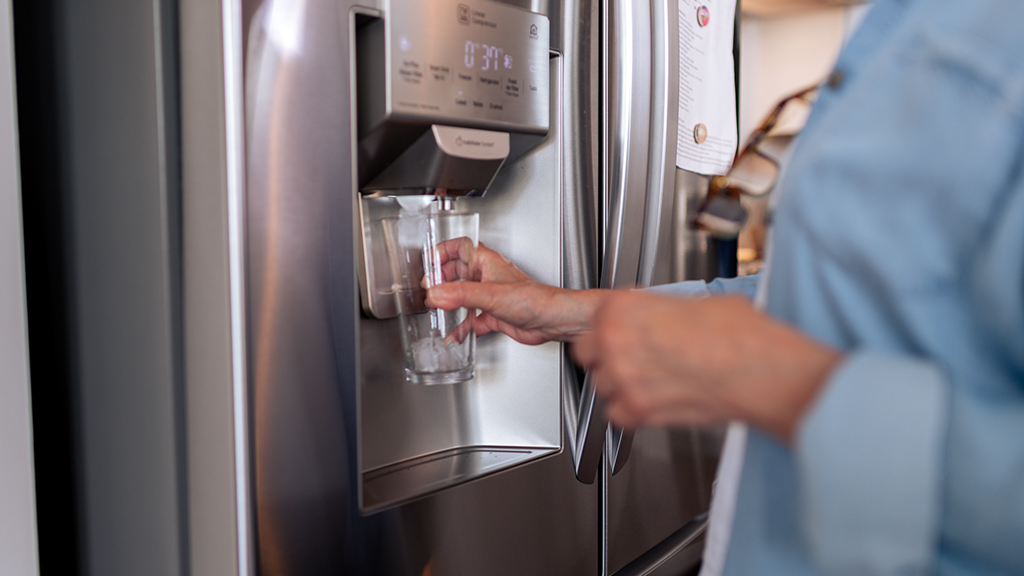
Examine the Water Filter
A clogged water filter can significantly impact the ice maker’s performance. As water passes through the filter, it is purified, removing impurities and contaminants. Over time, the filter can become clogged with debris, reducing water flow and hampering ice production.
To examine the water filter, locate its position in your refrigerator. Refer to your refrigerator’s manual if you are unsure about its location. Once you find the water filter, carefully remove it from the housing. Inspect the filter for any visible signs of clogging, such as discoloration or sediment buildup.
If you notice that the filter is clogged, it is essential to replace it. Most refrigerators use a standard water filter that can be easily purchased at a local hardware or appliance store. Follow the manufacturer’s instructions to properly install the new filter. By regularly replacing the water filter according to the recommended schedule, you can ensure optimal ice maker performance.
Inspect the Ice Maker Fill Tube
The ice maker fill tube is responsible for supplying water to the ice mold, where it freezes and forms ice cubes. If the fill tube is blocked or frozen, it can impede the flow of water, resulting in no ice production.
Begin by locating the ice maker fill tube in your refrigerator. It is usually positioned above the ice maker assembly and may be connected to the water inlet valve. Once you locate the fill tube, carefully inspect it for any blockages or ice buildup.
If you notice any blockages, it is crucial to address them promptly. Start by gently cleaning the fill tube using a soft cloth or brush. Be careful not to use any sharp objects that can damage the tube. If cleaning does not resolve the issue, it may be necessary to replace the fill tube entirely. Consult a professional technician to ensure that the replacement is done correctly.
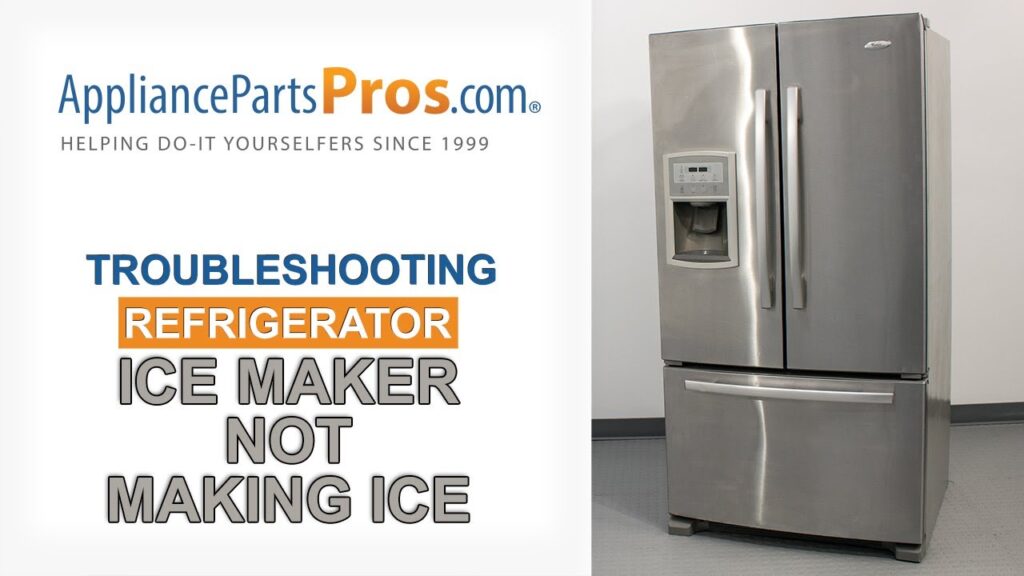
Verify the Ice Maker Assembly
The ice maker assembly consists of various components that work together to produce ice. If any of these components are misaligned or faulty, the ice maker may not produce ice as expected.
Ensure that the ice maker assembly is properly aligned. Check if it fits snugly in its designated position and that all connections are secure. If the ice maker appears to be loose or misaligned, carefully adjust it so that it is properly seated. Be cautious not to force any components, as this can cause damage.
Inspect each component of the ice maker assembly for signs of wear or malfunction. Look for any cracked or damaged parts that may affect ice production. If you find any faulty components, it may be necessary to replace them. Contact a professional technician to determine the exact replacement parts needed and to ensure proper installation.
Examine the Ice Level Control Board
The ice level control board is responsible for monitoring the ice level within the ice maker. If this control board malfunctions, it can disrupt ice production or cause the ice maker to stop working altogether.
Carefully inspect the ice level control board for any visible damages or signs of malfunction. Look for any burnt or discolored areas on the board. If you notice any irregularities, it is possible that the control board needs to be replaced.
To test the ice level control board, follow the manufacturer’s instructions. Depending on your refrigerator model, this may involve using a multimeter to check for proper voltage and continuity. If the control board fails the tests or is suspected to be defective, it is advisable to consult a professional technician for expert advice and assistance.
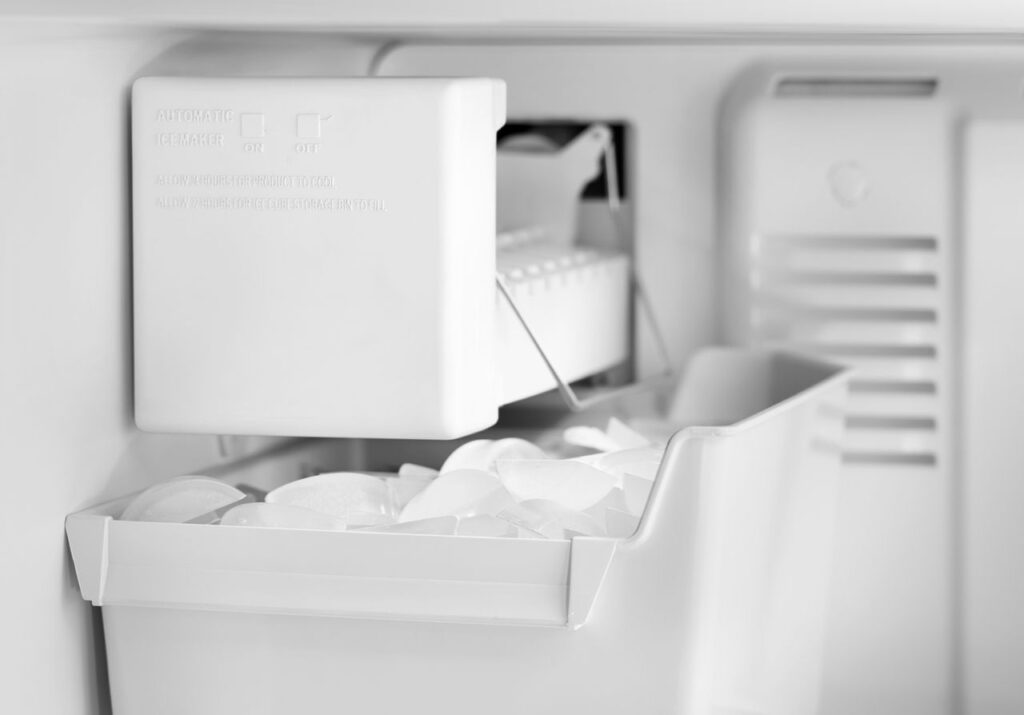
Verify the Ice Maker Switch
The ice maker switch is a small lever or button located within the refrigerator that controls the functionality of the ice maker. If this switch is turned off or damaged, it can prevent the ice maker from producing ice.
Locate the ice maker switch within your refrigerator. Ensure that it is in the “on” position. Sometimes, the switch can be accidentally turned off, leading to a lack of ice production. If the switch appears to be in the correct position, inspect it for any visible defects or loose connections. If you find any issues, it may be necessary to replace the switch.
Replacing the ice maker switch requires caution, as it involves electrical connections. It is recommended to consult a professional technician to ensure that the replacement is carried out safely and accurately.
Check the Freezer Temperature
The freezer temperature plays a crucial role in ice production. If the freezer temperature is not set correctly, it can affect the freezing process and hinder ice production.
Check the freezer temperature settings on your refrigerator. It is typically indicated on a control panel or dial located within the freezer compartment. Confirm that the temperature is set at the recommended level, usually around 0 degrees Fahrenheit (-18 degrees Celsius). If the temperature is set too high or too low, adjust it accordingly and allow time for the temperature to stabilize.
In addition to checking the temperature settings, inspect the freezer for any temperature-related issues. Look for any signs of frost or ice buildup, as this can indicate a problem with the defrost system. If you notice any abnormalities, it is advisable to consult a professional technician for a thorough diagnosis and repair.
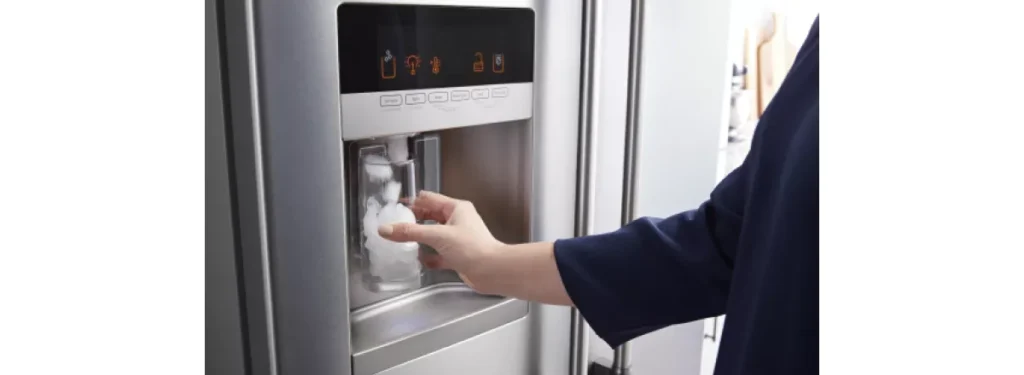
Clean the Ice Maker
Over time, debris and obstructions can accumulate within the ice maker, hindering its performance. Regular cleaning of the ice maker is essential to maintain optimal functionality and ensure a continuous supply of ice.
Begin by disconnecting the power supply to the refrigerator. Remove the ice bin or tray and thoroughly clean it using warm water and mild detergent. Pay attention to any hard-to-reach areas or corners where debris might accumulate.
Using a soft cloth or brush, carefully remove any accumulated debris or obstructions from the ice maker itself. Be gentle to avoid damaging any sensitive components. Once the cleaning is complete, sanitize the ice maker using a mixture of water and vinegar. Wipe down all accessible surfaces to disinfect the ice maker.
After cleaning and sanitizing the ice maker, reassemble all the components and reconnect the power supply. Allow the refrigerator and ice maker to cool down for a few hours before expecting ice production. Regular cleaning, conducted every few months, can help maintain a well-functioning ice maker.
Contact a Professional
If you have followed all the above troubleshooting steps and your refrigerator ice maker still fails to produce ice, it may be time to seek professional assistance. Refrigerator repairs can be complex, and it is best to consult a trained technician who has the knowledge and experience to accurately diagnose and repair the problem.
Contact the manufacturer’s customer support or a reputable appliance repair service to schedule an appointment with a technician. They will conduct a thorough inspection of your refrigerator, identify the root cause of the issue, and provide appropriate solutions. By seeking professional help, you can save time, effort, and potentially costly mistakes in attempting to repair the ice maker on your own.
Remember, if your ice maker is still under warranty, it is advisable to contact the manufacturer or authorized service center for repairs. Attempting repairs yourself might void the warranty and lead to additional expenses.
